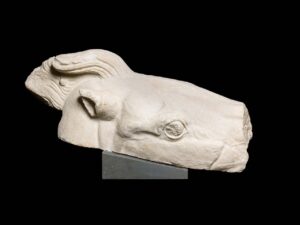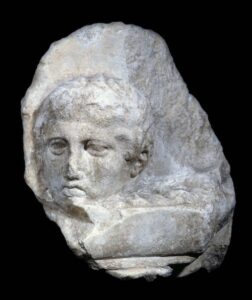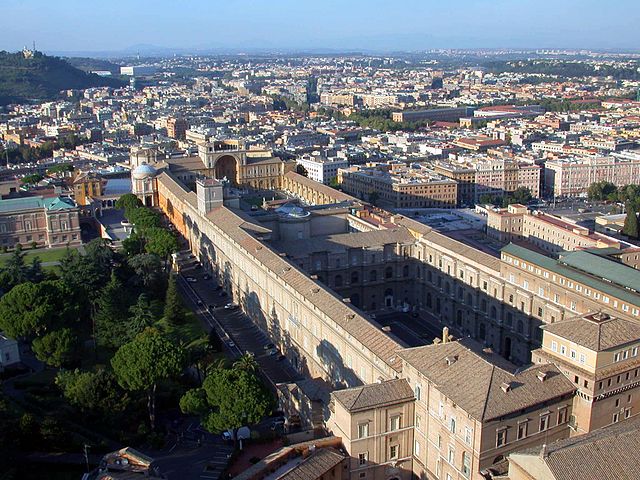In March 2023, three symbolically important though hardly artistically significant fragments of the hundreds of scattered sculptures from the Parthenon were gifted by the Vatican in an “ecumenical donation” to the Archbishopric of Athens, center of the Orthodox Church of Athens and All Greece. In announcing the decision last year, Pope Francis had been careful to avoid calling it a state-to-state transfer, describing the gift as a gesture of friendship.

Partial horse’s head from the Parthenon in the Vatican’s Gregoriano Profano Museum, now in Athen’s Acropolis Museum. Courtesy Vatican Museums.
The Archbishop of Athens, His Beatitude Ieronymos II, announced at the turn-over ceremony that the fragments would go permanently to the Acropolis Museum in Athens. They had been held by the Vatican’s Gregoriano Profano Museum since the 19th century. Cardinal Fernando Vérgez Alzaga, President of the Governorate of the State of the Vatican City said at a signing ceremony in March that the transfer was a gesture of peace at a time marked by wars, specifically referencing the conflict in Ukraine. He said, “The most important value of this act is to see, once again, how the Pope’s art collections become a privileged point of friendship between peoples, religions and Churches, overcoming all obstacles.”
The three fragments, the first representing one quarter of a horse’s head, possibly from the fourth horse pulling Athena’s chariot originally on the west front, a section of low relief frieze from the cella showing a boy’s head, and a much-eroded male head, possibly from one of the metopes from the southern side of the building, were displayed in the Acropolis Museum in Athens at the end of March 2023.

Head of a boy, possibly carrying gifts to the temple, the Parthenon, formerly in the Vatican’s Gregoriano Profano Museum, now in Athen’s Acropolis Museum. Courtesy Vatican Museums.
This is the second publicly announced repatriation of Parthenon sculptures from Italy. The first was a 12 x 14 inch fragment with the foot of the goddess Artemis from the Parthenon’s eastern frieze. The foot was transferred in 2022 from the ownership of the Antonio Salinas Archaeological Museum in Palermo to the Acropolis Museum, where it had already been on loan since 2008. The foot had been in the collection the artist and archaeologist Robert Fagan, who served as British consul general to Sicily in the 19th century. In 1820, his widow sold it to the Royal University of Palermo.
In welcoming the return of the Vatican fragments, Greek culture minister Lina Mendoni made the most of the decision to transfer the fragments from the Vatican calling it “heroic” and saying it showed the road that could be followed “for the unity of the Parthenon to be restored.”
 The Vatican Museums, Rome, seen from St. Peter's. Photo F. Bucher. CCA 2.0 license.
The Vatican Museums, Rome, seen from St. Peter's. Photo F. Bucher. CCA 2.0 license. 

